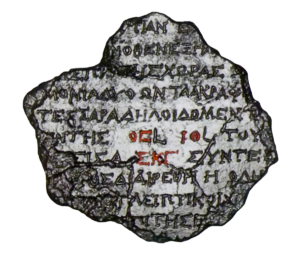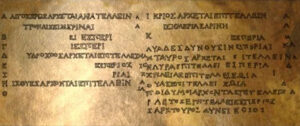The epigraphists are specialized scientists who focus on the study of texts written on any kind of material. The study of these texts in combination with archaeology and history, constitute the principal source of information on antiquity and their interpretation provides us with valuable material for the reconstruction and understanding of the past. Moreover, the form of writing, the type and variety of the letters that are used can supply useful evidence on the chronology of the texts, but also of the monuments on which they were found.

The mechanism bore on the front and back metallic plaques covered in densely written inscriptions of astronomical content, which contained instructions for the use of the instrument. The inscriptions on the surface of the Mechanism refer to astronomical and calendrical calculations. From the inscription on fragment G, which comes from the front plaque, it seems that the Mechanism was used not only by the manufacturer, but also by other persons, by astronomers. The inscriptions appear to have been written by the same hand and are dated, along with the Mechanism, around 150-100 B.C.



